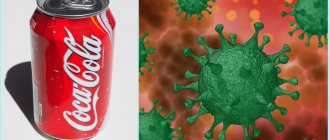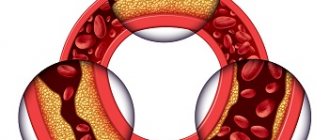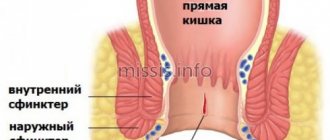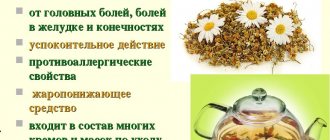Almost every person has experienced intoxication of the body. Vomiting and diarrhea, stomach pain are very unpleasant symptoms. There may be many reasons for this, but in any case, a person needs help. And one of the oldest and most effective methods is the use of potassium permanganate. But today many doubt whether it is possible to drink potassium permanganate. Today we will look at ways to use it and dosage.
general description
It is enough to ask the older generation whether you can drink potassium permanganate, and you will receive a positive answer. After all, they have repeatedly seen in practice that this inexpensive tool can help out in many situations. Potassium permanganate is a dry solid that is rich in color and dissolves in water. In this case, the crystals make it possible to obtain a pink solution.
If you make it very concentrated, the liquid turns out almost purple. When applied to the skin it turns it brown. But the solution is used not only externally. Today we are talking about whether it is possible to drink potassium permanganate precisely because the solution in this form is used for poisoning.
Overdose of potassium permanganate
Insufficient knowledge of how to dilute potassium permanganate in case of poisoning can have serious consequences. A solution that is too concentrated causes chemical burns to the mouth, esophagus, and stomach. In addition, systemic toxicity develops.
As a rule, potassium permanganate poisoning occurs when attempting to self-medicate. Such cases have become extremely rare after the ban on the free sale of potassium permanganate in pharmacies. Today you can buy potassium permanganate only if it is prescribed by a doctor.
The first symptoms of poisoning are:
- Nausea;
- Vomiting of dark contents, reminiscent of the so-called. coffee grounds;
- Pain in the throat, chest, stomach.
Subsequently, the victim develops all the signs characteristic of poisoning with cauterizing poisons:
- Gastrointestinal bleeding;
- Multiple organ failure;
- Hemolysis;
- Methemoglobinemia;
- Destabilization of mental state, delirium;
- Hemorrhagic enteritis, gastritis.
Pain, vomit the color of coffee grounds, black stools are ominous signs of bleeding.
One of the most dangerous consequences of a burn is swelling, which can spread to the respiratory tract. In the absence of qualified assistance, the patient dies from mechanical asphyxia within half an hour.
When examining patients with KMgO4 poisoning, a dark, almost black color of the affected mucous membranes, cyanosis of the skin, and sometimes hypersalivation (increased salivation) are revealed.
Before the ambulance team arrives, the victim should be given a semi-sitting position, an influx of fresh air should be provided, and pieces of ice should be allowed to dissolve. Without being able to assess the degree of the burn and the condition of the internal organs, you should not rinse the victim’s stomach, give him water, or try to neutralize potassium permanganate with other chemicals. The price of illiterate care is bleeding or perforation of the esophagus and stomach.
Useful properties for poisoning
If you have eaten a low-quality product, there is a high probability of developing unpleasant symptoms such as vomiting and diarrhea. Is it possible to drink potassium permanganate in this case? Let's take a look together. In fact, its use is quite justified. This is an excellent antiseptic, which, upon contact with organic matter, reacts with the release of oxygen.
Thanks to this property, this remedy is well suited for gastric lavage. Therefore, you can perform this procedure after food poisoning. As a result, the death of pathogenic microorganisms will occur, which is what was required.
Types of poisoning
There are several types of poisoning and it is important to know about each of them in order to understand what first aid is needed before the ambulance arrives.
- Food poisoning
Symptoms of food poisoning appear after 2-4 hours.
In case of food poisoning, gastric lavage . Make a weak solution of potassium permanganate or soda (1 tablespoon of soda for 1.5–2 liters of water). Afterwards you can take sorbents (activated carbon in dosage: one tablet per 10 kg of weight).
- Poisoning from drugs and alcohol
Drug poisoning usually occurs when taking medication without a doctor's prescription. Unknowingly, some people believe that a larger dose of medicine will help cope with the disease better.
If drug poisoning occurs, an ambulance is called and the stomach is washed with plain water . But washing is possible only if the person is conscious . It is strictly forbidden to pour liquids into the mouth of an unconscious person. They can get into the respiratory tract and interfere with breathing!
When the ambulance arrives, you need to give the doctor a package of the medications you took and, if possible, tell them the time of taking them and the dose.
Another common cause of poisoning is alcohol.
In case of alcohol poisoning, as in the cases described above, you need to rinse your stomach . After washing, the poisoned person must be given sweet tea .
If the poisoned person is unconscious, you need to call an ambulance. To bring the poisoned person to consciousness, cotton wool moistened with ammonia .
- Acid or alkali poisoning
During first aid, the victim must immediately find out what substance caused the poisoning, because this will determine the method of providing assistance.
acid poisoning occurs :
Soda is contraindicated for rinsing!
You can give milk, butter and other enveloping agents.
In case of poisoning with carbolic acid and derivatives (phenol, Lysol), it is contraindicated to drink milk, butter and fats! Burnt magnesia and lime water dissolved in water are given as a drink .
alkali poisoning occurs :
The stomach is immediately washed with warm water or a 1% solution of citric/acetic acid. Washing is done within 4 hours after poisoning occurs.
When rinsing is impossible, give enveloping agents , 2-3% solution of citric/acetic acid (1 tbsp every 5 minutes).
Sodium bicarbonate solution is contraindicated !
The main thing is to deliver the victim to the hospital as soon as possible. institution. If there is a suspicion of perforation of the stomach or esophagus (sharp pain in the abdomen, unbearable pain behind the sternum), you should not give the poisoned person anything to drink or rinse the stomach.
- Carbon monoxide and lighting monoxide poisoning
The first aid will be to move the poisoned person to fresh air . Respiratory arrest is restored by artificial respiration. Severe poisoning requires hospitalization.
- Poisoning with pesticides
In everyday life, people are poisoned by organophosphorus compounds through the air or food. Symptoms appear after 15-60 minutes.
If the poison is in the stomach, an urgent rinse is done with an adsorbent substance . In addition, the person needs to take a saline laxative . Toxic chemicals that have reached the surface of the skin are removed as quickly as possible with a stream of water.
Beneficial features
It is thanks to them that it becomes possible to conclude whether it is possible to drink potassium permanganate. To date, the following points have been reliably established:
- Potassium permanganate oxidizes many organic compounds that are formed in the stomach under the influence of intoxication.
- Potassium permanganate destroys pathogenic bacteria.
- Toxic substances and microbes cannot withstand contact with potassium permanganate.
- This is an excellent option for preventing the development of purulent infection.
How is it used for poisoning?
Many years of practice show that there is no need to doubt whether you can drink a solution of potassium permanganate. Very often it can be the first aid in case of severe poisoning. It is recommended to use a weak solution in the following cases:
- If symptoms of food poisoning are obvious. Of course, this must be determined by a doctor.
- If there is a place for withdrawal syndrome, that is, intoxication with alcoholic products develops.
First of all, the specialist must determine what exactly caused the intoxication. Only after this can he say whether it is possible to drink potassium permanganate. In case of poisoning, the sooner you do this, the less toxins will enter the blood. The concentration of the solution is not more than 1%. The product is also used to eliminate dangerous consequences for humans in the process of reacting with unknown elements.
What can replace the product (analogs)
Unfortunately, potassium permanganate is not present in every home. There are other options for medicinal liquid agents used for poisoning. In children, treatment is carried out using similar solutions.
What you can do:
- The washing procedure can be carried out with clean boiled water at room temperature. For treatment you will need up to five liters of water.
- Soda solution will help with various types of poisoning. To prepare, dilute a tablespoon of soda powder in a liter of water.
- For rinsing, it is allowed to use saline solution at a concentration of 0.9%.
- It is allowed to use liquid mixtures with sorbents - activated carbon, polysorb, enterosgel.
- A saline solution will help to cope perfectly with toxins in the stomach - take two large spoons of salt for five liters of water. (lethal dose of salt)
We recommend: Probiotics that are most important for the immune system
The choice of remedy is up to the person, but it is always necessary to take into account the condition of the victim and the product that caused the intoxication.
In what cases can potassium permanganate not be used?
Infectious disease doctors answer positively the question of whether it is possible to drink potassium permanganate when vomiting. But you need to take into account the correct dosage. A weak solution is used for oral administration in case of poisoning.
Potassium permanganate has a number of contraindications for use by people with a tendency to allergic reactions. Often young parents call the emergency room and ask if their children can drink water with potassium permanganate if they are vomiting and suspect poisoning. This is not recommended. You shouldn’t even add pink crystals to the bathing water to prevent your child from getting burns. Only when the rash is drying out can it be reasonable to use potassium permanganate.
Indications and contraindications
Alcohol poisoning is one of the main indications for the use of potassium permanganate
A weak solution of potassium permanganate is an excellent neutralizer for poisoning with chemical and biological substances. Therefore, the scope of its application is quite wide.
Potassium permanganate is used for poisoning:
- quinine;
- hydrocyanic acid;
- phosphorus;
- alcohol and its surrogates;
- with the enteral route of penetration of the toxin into the body;
- food poisoning.
Important! KMgO4 is not used in the acute stage of poisoning with cauterizing liquid (acids, alkalis, ammonia)!
With proper use of potassium permanganate, it has practically no contraindications, except for the individual hypersensitivity of the patient. In addition, the product is not recommended for use on children under 1 year of age.
Basic Rules
In case of poisoning, the most important thing is not to waste time so that toxins do not circulate throughout the body, aggravating the intoxication. Is it possible to drink a weak solution of potassium permanganate? Yes, but only so that its concentration does not exceed 0.1%. This is quite easy to do. You don't even have to do any additional weighing to do this. You just need to add 2 crystals of powder per liter of boiled water. The solution should be pale pink. A more saturated solution can lead to damage to the mucous membranes of the digestive organs. It is recommended to strain it first. This will prevent the possibility of undissolved crystals getting on the mucous membranes.
How to properly dilute potassium permanganate?
How to dilute a compound to obtain a medicinal liquid? It is necessary to use liquid from potassium permanganate in case of poisoning carefully and carefully. Such a remedy is prepared by carefully following the instructions. An incorrectly diluted medicine can lead to serious changes in the body.
We recommend: How to properly take hydrogen peroxide internally according to Neumyvakin
Manufacturing stages:
- Several crystals of potassium permanganate are poured with boiled and cooled water,
- Mix thoroughly with a plastic or wooden stick, the liquid turns out to be dark burgundy in color,
- The solution is left for seven minutes to settle.
- Carefully pour half of the liquid into another container, filtering it through several layers of gauze or bandages,
- Add boiled water until the solution turns a faint pink color.
If these rules are followed, the concentration of the liquid medicine is approximately 0.1%.
It is important that the solution is weak. Using a strong product can cause burns to the mucous membranes of the stomach and esophagus.
How to rinse the stomach?
Not everyone is familiar with this technique, so let’s pay some attention to the procedure. If signs of poisoning become noticeable, then:
- Prepare a three-liter jar of solution. You need to try to drink as much as possible. Of course, it’s difficult to do this in one go. But you need to try to drink a liter.
- Now you need to try to induce vomiting.
- You can repeat the procedure.
Of course, getting your child to drink that much fluid can be difficult. But if you are in nature and there are no other drugs at hand, you will have to go this route to prevent the condition from worsening. You can limit yourself to a smaller amount of liquid, and immediately after that induce vomiting. By repeating the procedure a couple of times you will significantly alleviate the condition.
Potassium permanganate poisoning
Improper use of the solution can cause severe poisoning of the body. Most often, children and pregnant women are susceptible to such consequences. Therefore, when talking about whether pregnant women can drink potassium permanganate, maximum caution should be exercised. It is best to give preference to safer analogues: Enterosgel, Polisorb, Regidron.
There are many sorbents on sale today. Not all of them are gentle on the stomach and intestines. A gastroenterologist will help you understand all the diversity. “Polysorb” has proven itself best today. It consists of natural silicon and has no chemical additives; it begins to act in the first 4 minutes. Thanks to its mild but serious effect, the drug can help even in the most difficult situations. It is not for nothing that it is used for atopic dermatitis and viral diseases, food and chemical poisoning. Do not forget that if the patient’s condition is serious, then you cannot self-medicate. Let the doctors provide first aid.
The cause of poisoning is usually the use of an overly concentrated solution of potassium permanganate. It is very easy to overdose on crystals, and as a result, the liquid burns the mucous membrane of the larynx. But more serious side effects may also develop:
- Shock.
- Damage to the abdominal organs.
How to understand that there is a negative reaction to potassium permanganate? Usually there is abdominal pain, diarrhea, and the tongue turns purple. Convulsions often develop and shortness of breath appears.
A child will not get food poisoning if adults follow simple rules
Food poisoning in children - possible routes of intoxication and their symptoms
Remember that infants and children of preschool and primary school age are especially susceptible to food poisoning, since they do not yet have a strong enough immune system. Food poisoning in children, as well as in adults, most often occurs when eating food that is contaminated with microbes. Manifestations are divided into two forms - toxic infection and intoxication.
Typically, toxic infection is caused by microbes belonging to the Salmonella group, as well as paraintestinal and E. coli. Please note that salmonella is very common and often infects the intestines of birds and animals. And when the animal’s body weakens and, accordingly, its protective functions too, salmonella infects all internal organs. Such meat, when it reaches people’s tables after weak heat treatment, causes poisoning. Eggs, pates, milk, cheese, fish and cottage cheese can also become infected with salmonella. Symptoms of poisoning usually appear after a few hours or later, depending on the dose, the organism and the nature of the poisoning. The child begins to experience nausea, vomiting, headache, stools are frequent and loose, and the body temperature rises. The illness lasts from two days to a week and in the vast majority of cases ends in recovery.
Food intoxication in a child's body occurs as a result of eating food that contains poisons in the form of waste products of microbes. They are called toxins. Most often, such poisoning is caused by staphylococcus. It usually ends up in ready-made meals from those who have pustular skin diseases. Poisoning through cakes, ice cream, pastries, sausages, ham, sausages and so on is common. Even if it gets into raw foods, this toxin is not easy to destroy. At boiling temperature it does not collapse for several hours. Symptoms of poisoning usually appear over time in the same way as with toxic infection. The clinical picture and course of the disease are similar.
Botulism causes very dangerous poisoning of the body, which without urgent medical intervention can result in the death of the child. Botulism bacteria actively multiply in an oxygen-free environment and produce a strong toxin. It is destroyed after 20 minutes of boiling, but to destroy the spores themselves it is necessary to maintain a temperature of 120 degrees Celsius for 10 minutes. The most common source of poisoning is various kinds of canned foods, namely meat, fish, and vegetables. But there have been cases of intoxication through soil that was contaminated with the feces of sick animals. The onset of the disease occurs after a couple of hours, although an incubation period of several days is sometimes possible. The child feels dry mouth, dizziness, general weakness and difficulty breathing, the pulse quickens, paralysis of the eye and facial muscles, as well as the muscles of the soft palate and tongue occurs. Because of this, speech, vision and swallowing disorders occur - the child chokes and begins to have difficulty distinguishing between nearby objects and text. The toxin affects the nervous system of the heart and central nervous system. The disease lasts 4-8 days, is difficult and without medical intervention can lead to death due to paralysis of the respiratory center.
Please note that canned honey may contain botulism spores, even industrially produced honey. Therefore, under no circumstances should you give this honey to children under one year of age, as they may develop infant botulism. And for adults it is usually harmless.
In infants, botulism, as a rule, begins with constipation, then the baby begins to suck poorly and has difficulty swallowing, his eyelids begin to weaken, he weakly makes sounds or words, and general impotence develops.
Non-bacterial poisoning usually occurs due to the consumption of poisonous mushrooms, fish or potatoes turned green by light, which accumulate poisonous solanine under their skin. Many mushrooms are poisonous in nature, and there are many false mushrooms. Remember that children under 12 years of age are not recommended to eat mushrooms at all. They are especially often poisoned by mushrooms - strings, which are very similar to edible morels. Only stitches in dry weather conditions develop toxic helvella acid, a very potent poison that is resistant to heat. Pay attention to the photographs and avoid purchasing and collecting similar mushrooms.
Poisonous - line. Edible morel.
Some fish may be poisoned by toxins due to improper handling or transportation. For example, mackerel releases poisons if it is not frozen in a timely manner. Also keep in mind that children should absolutely not be given Japanese sushi with fish or shrimp, which can also be a source of dangerous poisoning.
Food poisoning in children - disease prevention
Here are the basic rules for preventing food poisoning in children:
- The first and main rule adults should remember from school: “wash your hands before eating,” and this is not just a general slogan, but a vital necessity. Washing your hands before eating reduces the risk of poisoning several times.
- Next, the second rule is to thoroughly wash the foods you eat raw – vegetables and fruits. Avoid giving children raw milk and eggs. It is also recommended to boil pasteurized milk from the store.
- Do not allow children to eat “adult” foods such as Japanese sushi, smoked fish, mushrooms, and so on.
- The meat of birds and animals must undergo careful temperature treatment, use the rule: “you cannot digest the meat.” The same goes for fish, seafood and eggs.
- When canning at home, strictly adhere to the technology and temperature conditions to destroy botulism spores. Do not use homemade or commercial products with bulging bags, jars or lids (also called bombing). Do not eat foods with a suspicious odor or consistency.
- Store perishable foods in the refrigerator only within their expiration date and in a container with a lid. Remember that cakes, pastries with cream, salads with mayonnaise, and open packages of food and drinks that do not contain preservatives, such as natural juices, spoil very quickly. Remember the approximate storage time for popular products in the cold up to 8 degrees (without refrigeration it is much less, and sometimes products cannot be stored at all without refrigeration). Of course, modern preservatives can extend the life of some products, but should you needlessly risk the health of your children?
- Curd mass, curd cream or cheese curds - refrigerate for up to 24 hours (cannot be stored without refrigeration).
- Pies fried with meat or fish - in the cold for up to 24 hours, in a cool place for up to 12 hours.
- Cake with butter cream - in the cold up to 6 C°, storage time up to 36 hours, in a cool place up to 12 hours.
- Custard pie – refrigerate for up to 6 hours; cannot be stored without refrigeration.
- Serve hot fish or meat dishes soon after cooking; do not store perishable foods outside the refrigerator.
- When purchasing and before consuming, always check the expiration date of products.
- Do not buy very early fruits and vegetables (for example, tomatoes, watermelons, melons or strawberries), they usually contain a lot of chemical growth stimulants that can cause acute poisoning.
- Do not buy food from dubious places from hands or trays. Especially in the hot season, especially on the beach, especially meat products (chebureks, belyashi, etc.) especially for children! Remember that meat in the sun can turn into poison after 20-30 minutes.
Is it possible to drink potassium permanganate if you have diarrhea?
If there is a slight loosening of the stool, then, of course, it is possible. But in severe cases and dehydration, it is better to avoid self-medication. A good solution would be to immediately consult a doctor and go to hospital. This is due to large loss of fluid. But with a common intestinal disorder or when eating not the freshest foods, you can heal even at home. This is what potassium permanganate is used for.
To do this, you need to throw 3-4 manganese crystals into a small cup and fill it with water. Wait 20 minutes for them to completely dissolve and mix thoroughly. After this, dissolve the concentrate in a liter of boiled water. For children, the solution should only have a slightly pink tint. You need to drink a glass of it twice a day. But most often, just one time is enough for the diarrhea to stop.
Mechanism of action
Potassium permanganate has gained wide popularity for diarrhea due to its antiseptic effect. Let's take a quick look at the mechanism of action. A solution of potassium permanganate reacts with organic matter, and oxygen is released. This has a damaging effect on foreign microorganisms. But that is not all. Thanks to this reaction, an insoluble oxide remains in the intestine, which combines with proteins. This is due to the astringent effect. That is, a kind of barrier film is created that does not allow microorganisms to enter the intestinal wall and back. Thanks to this, the diarrhea stops.











